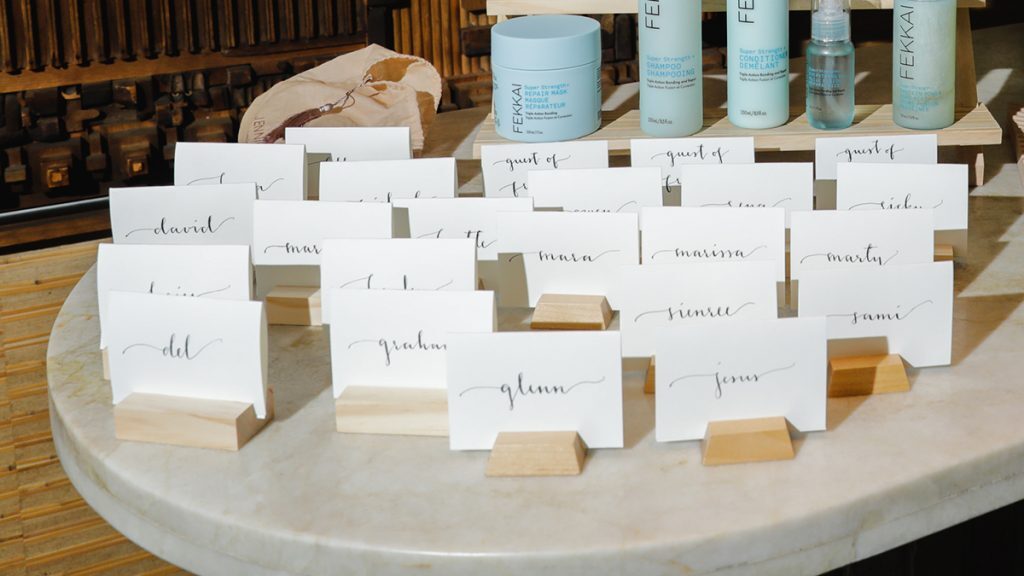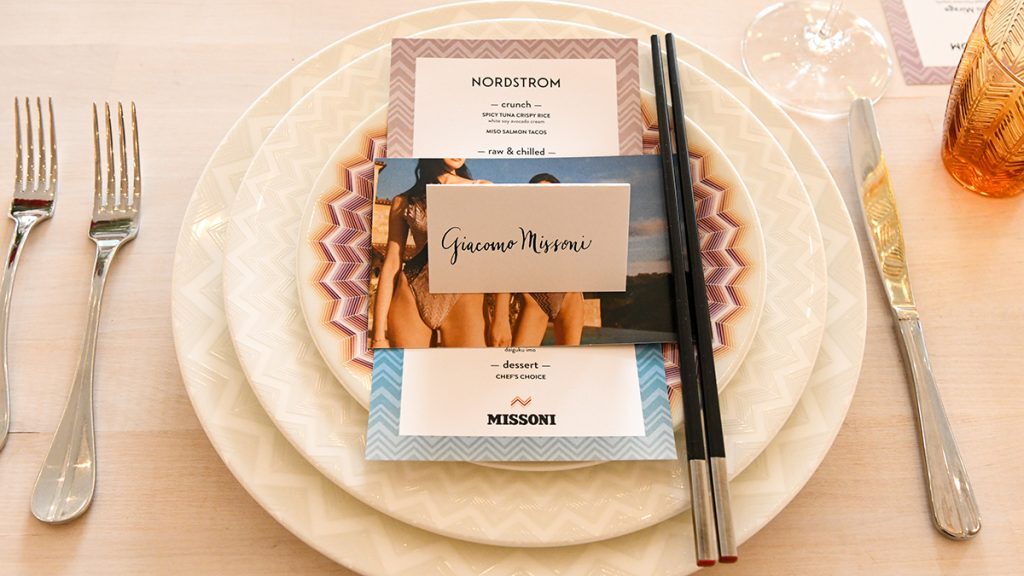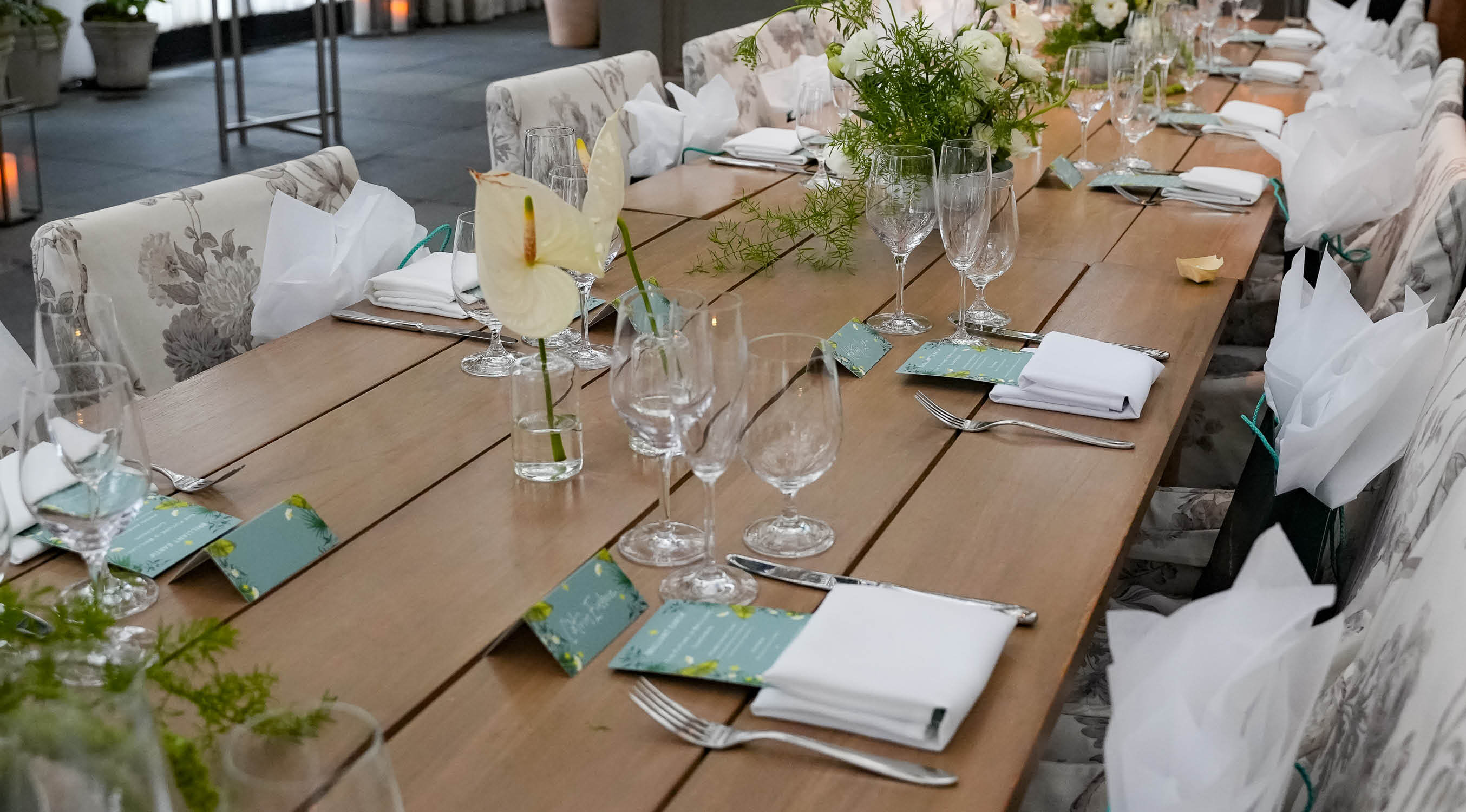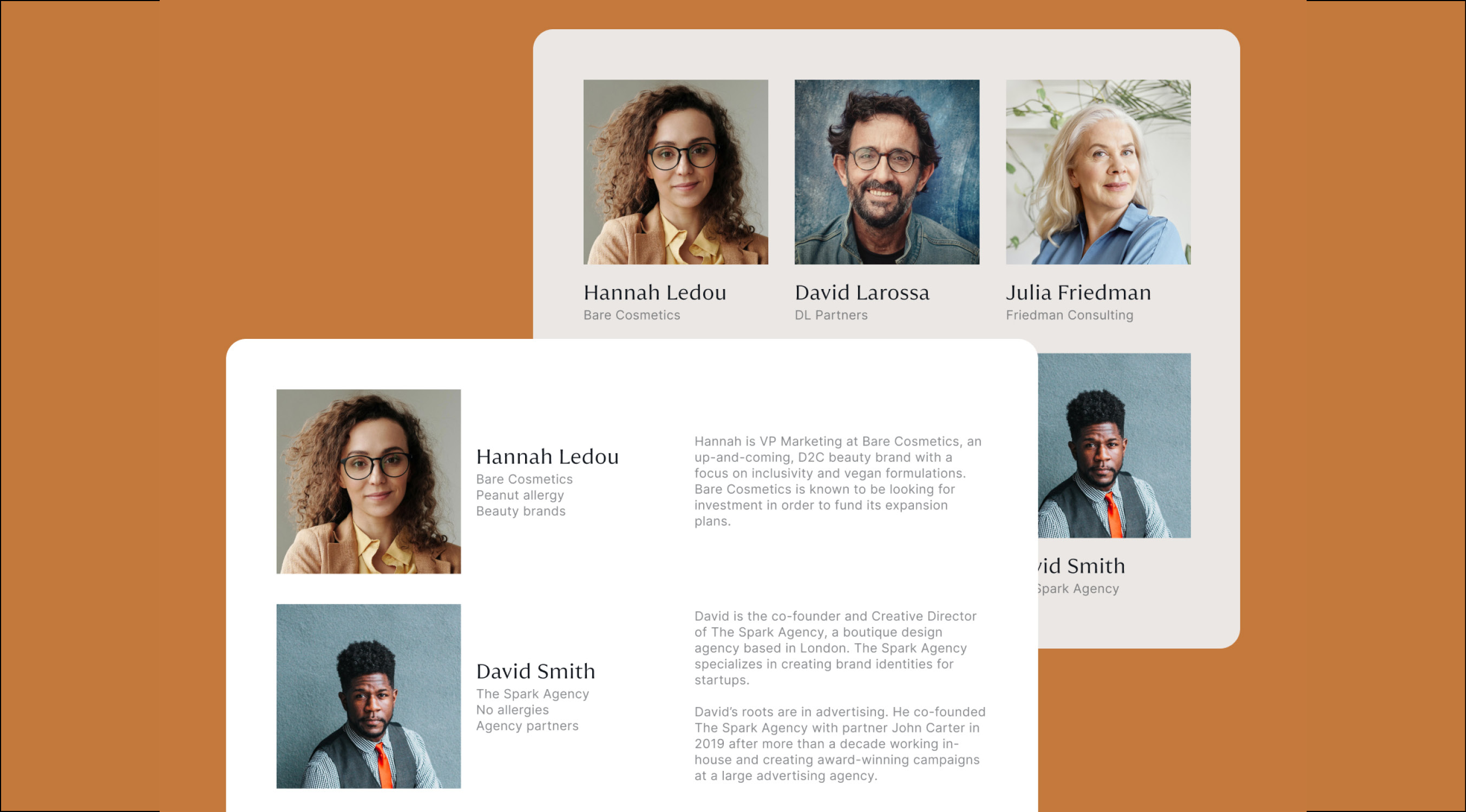Escort cards and place cards are two different types of seating tools — and no, they’re not just for weddings.
While they serve distinct purposes, both can elevate the guest experience. Your event may benefit from using one style of card or, in some cases, both.
Whether you’re hosting an exclusive gala for high-profile VIPs or a semi-casual luncheon, here’s how you can use escort cards and place cards to heighten the elegance of your next event.
Understanding card types
Like many of the finer details involved in planning an event, escort cards and place cards add a touch of luxury that refines the guest experience – provided you understand their true purpose and the proper way to use them.
Place cards
Place cards designate the specific seats at which each table’s guest will sit. They’re essential for large, formal dinners, but they can also be used at smaller events where strategic seating is necessary.
While using place cards to assign specific seats might sound like micromanaging, it’s incredibly helpful any time your guests include people who may be unfamiliar with each other. Place cards are also fantastic when you want to encourage connections and relationship-building among guests.
Better yet, place cards can cut down on seating time because guests will know exactly where to sit and won’t need to wander to search for a seat.
Escort cards
Unlike place cards, escort cards direct guests to a particular table. They do not tell guests where to sit at the table.
Unless you want flexible event seating arrangements that encourage guests to sit anywhere, escort cards are necessary. Escort cards ensure guests make it to their designated table without confusion.
If there are place cards on the table, guests can take their assigned seats. If there are no place cards, they can take any seat at that table.
At some events, escort cards double as “name tags.” Guests can place their cards at their chosen seats so that other guests at the table can see their names. This becomes useful when arranging seats to encourage new connections.
You might like: How to plan an elegant gala dinner

Three ways to use escort cards and place cards to seat your guests
There are three different ways to use escort cards and place cards at events.
One option is to not use them at all. The second option is to use escort cards only, and the third option is to use escort cards in combination with place cards.
1. No cards at all: allow guests to choose
One way to seat your guests is to simply let fate decide. For example, you could fill a bowl with different colored stones or slips of paper and ask your guests to choose from the bowl at random. Guests who choose the same color are invited to sit together at the corresponding table.
Another option is to let guests sit anywhere they want. However, this can be risky and lead to problems, especially at larger events. If tables seat eight people and groups of six or seven gather together, it can pose an awkward situation for solo guests and lead to underpopulated tables.
2. Formally arranged escort cards
Set up a table, create a signage board, or create an eye-catching escort card display with cards for every guest arranged by name. Strategically place them within your venue so that guests can find their cards with ease while enjoying the evening.
Another option is to hand escort cards to guests as they check in, so they don’t have to spend time locating their table assignment on their own. At large, formal events with several tables, consider assigning staff members to walk guests to their tables so they don’t have to roam the room in search of their seats.
If it doesn’t matter who sits next to whom, escort cards are all you need to direct guests to their assigned tables.
3. Place cards at every seat
Should you prefer all guests take a specific seat, it’s ideal to intentionally set place cards at every place setting. The escort cards will direct guests to the correct tables while the place cards will show them exactly which chairs to use.
Of course, there are plenty of other concerns to consider when deciding whether to assign specific seats. Ask yourself the following questions to determine what type of seating arrangement will work best:
- Is the event for people with or without existing relationships with the organizer?
- Will certain people give speeches or participate in a unique way that warrants seating them together?
- Do you want guests to sit next to their plus one, or do you prefer to encourage new interactions?
- Has anyone requested to be seated nearby or far away from any other guests?
At some events, such as wedding receptions, place cards can also be used to notify wait staff which guests have dietary restrictions or who opted for steak versus fish. For the most upscale events, caterers usually opt for a more subtle sign, such as a ribbon tied to the back of the chair.
Not sure who should sit next to whom? Thankfully, there are several ways to decide.

Seating assignments: who should sit together?
When assigning seats, take care to designate the right seats to the right people.
Depending on the shape of your tables and the guests in attendance, there are a few different ways to approach this.
Rectangular vs round tables
At a rectangular table, the head seats are usually — but not always — at the ends of the table and should be reserved for the hosts. Dignitaries, VIPs, and guests of honor should be seated as close to the host as possible.
For government and diplomatic events, there is a specific protocol as to who should sit where and in what order. Always consult an expert to ensure you get the placement right.
At a round table where there is no head seat, you have a little more flexibility.
Group your guests based on interests or relationships
Create seating arrangements that are not only comfortable for your guests but also congenial to conversation. A wonderful way to do this is by seating people based on mutual interests or by grouping people who might be able to foster new relationships.
Ask yourself these questions when deciding how to seat your guests:
- Do your guests need to discuss business with one another?
- Do your guests share hobbies or interests?
- Do your guests work in a common profession?
- Do your guests share the same marital status?
- If your guests already know each other, do they like each other?
If you’re hoping to do some subtle matchmaking, you may be inclined to seat single guests together. However, keep in mind that some people might not be pleased if they figure out what you’re trying to do.
Of all these considerations, the most important is whether your guests like one another. It’s a good rule to seat people as far apart as possible if they’re known to have animosity toward one another.
Check out: A 9-point event safety plan to protect your guests
Escort cards: FAQs
What is an escort card?
Escort cards are small cards that communicate to guests which table to sit at. Typically, they display the guest’s name and table number (or table name), which allows guests to quickly and easily locate their designated dining table.
How should I address escort cards?
At formal events, escort cards contain guests’ full names and official titles. Consult Debrett’s Forms of Addresses to learn how to address cards for people with esteemed titles or who come from esteemed professions.
At informal events or gatherings with a small number of participants, this rule may be more relaxed. In either case, ensure that all names and table numbers and names are easy to read and have been double-checked for accuracy.
What makes flat escort cards different from folded escort cards?
Flat escort cards are simple and easy to read. By including the guest name next to the table name or number, attendees can instantly see where they’ll be seated.
Folded escort cards, also called tent cards, are standing cards with more surface area for personalization and decoration. Typically, the guest’s name is printed on the front, while the table name or number is inside the card or on the reverse side.
How big are escort cards? What size are they when folded?
Generally, escort cards measure around 2.5 x 3.5 inches, slightly bigger than a standard-size business card. When folded, they usually measure 2.5 x 1.75 inches but can vary according to the host’s design choices.
Foldable card stock is the standard for traditional tent cards, but flat cards can be made from materials as diverse as acrylic, metal, and wood. From custom die-cut paper cards to luxe metal name plates, your chosen card design should echo the event’s theme and level of formality.
At the most luxurious events, the host or organizer may include accents like monograms or wax seals. It’s not uncommon to hire a professional calligrapher to hand-write the escort cards and name place cards.
If you do hire a calligrapher, consider inviting them to the venue on the evening of the event in case you need to alter seating arrangements or accommodate last-minute RSVPs.
Related: Design your own escort cards with these free event design resources
How do you lay out escort cards?
Seating cards can be arranged alphabetically by the guests’ first or last names, or they can be organized numerically by the table number.
Numerical order works best for smaller events. For large-scale events, it’s better to arrange escort cards in alphabetical order.
No matter how you plan to seat your guests or which type of name card you choose, zkipster can help you plan and organize your entire event. With zkipster you can build detailed guest profiles, create dynamic, color-coded seating charts and guest lists, customize account templates, collect and monitor RSVPs, send check-in messages to guests with details of their tables, and much more.
How do you lay out place cards?
You can place tent cards on the plate or directly above the individual table setting. If your tables feature a lot of décor or large centerpieces, you can place them in the center of the plate to avoid cluttering the table. If you also intend to use menu cards, consider placing the menu cards on the plate and the place card above the plate, or vice versa.
When using flat place cards, insert them into a place card holder and position the holder directly above the plate.
Like escort cards, the names on table place cards should be easy to read so everyone can find their seating assignment quickly and without confusion.
Accessibility matters, too. If you’re thinking about using an elegant, calligraphic font, keep in mind that some people find calligraphy difficult to read. Whether you prefer to use printable place card templates or hire a professional calligrapher to write the cards by hand, it’s best to choose a modern calligraphy style over a traditional style. Modern calligraphy is generally easier to read.
Like dinnerware, napkins, glassware, and centerpieces, escort cards and place cards will make your table settings sing. By choosing the right name card style and making strategic decisions about who should sit where on the big day, you can enrich the guest experience and create a truly unforgettable event.
Up next: The 7 secrets of successful red carpet events
Header image: Future is Brilliant Event with Jane Goodall and Brilliant Earth at The Times Square EDITION, NYC. Photo by Miguel McSongwe / BFA.com ⓒ BFA 2024



